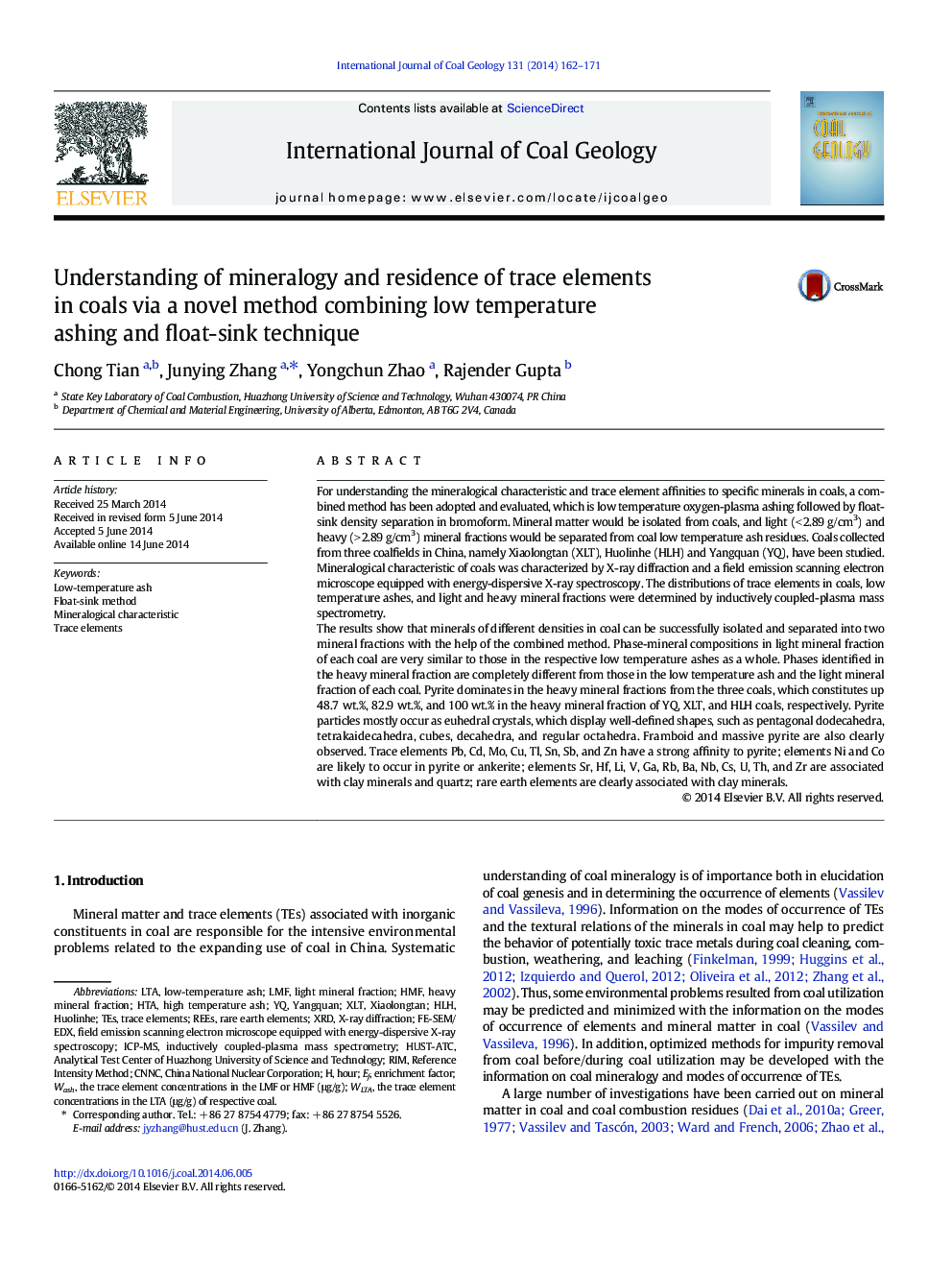| Article ID | Journal | Published Year | Pages | File Type |
|---|---|---|---|---|
| 1753023 | International Journal of Coal Geology | 2014 | 10 Pages |
Abstract
The results show that minerals of different densities in coal can be successfully isolated and separated into two mineral fractions with the help of the combined method. Phase-mineral compositions in light mineral fraction of each coal are very similar to those in the respective low temperature ashes as a whole. Phases identified in the heavy mineral fraction are completely different from those in the low temperature ash and the light mineral fraction of each coal. Pyrite dominates in the heavy mineral fractions from the three coals, which constitutes up 48.7Â wt.%, 82.9Â wt.%, and 100Â wt.% in the heavy mineral fraction of YQ, XLT, and HLH coals, respectively. Pyrite particles mostly occur as euhedral crystals, which display well-defined shapes, such as pentagonal dodecahedra, tetrakaidecahedra, cubes, decahedra, and regular octahedra. Framboid and massive pyrite are also clearly observed. Trace elements Pb, Cd, Mo, Cu, Tl, Sn, Sb, and Zn have a strong affinity to pyrite; elements Ni and Co are likely to occur in pyrite or ankerite; elements Sr, Hf, Li, V, Ga, Rb, Ba, Nb, Cs, U, Th, and Zr are associated with clay minerals and quartz; rare earth elements are clearly associated with clay minerals.
Keywords
Related Topics
Physical Sciences and Engineering
Earth and Planetary Sciences
Economic Geology
Authors
Chong Tian, Junying Zhang, Yongchun Zhao, Rajender Gupta,
